Disclosure: This article contains affiliate links. We may earn a commission from purchases at no extra cost to you, which helps our travel content.
I've always believed that holy cities possess a certain magic that extends far beyond their religious significance. Kairouan—Tunisia's spiritual heart and Islam's fourth holiest city—proved this theory spectacularly during my recent two-week autumn stay. While most tourists breeze through on day trips from coastal resorts, I decided to slow down and sink into the rhythm of local life. What unfolded was an experience so authentic and budget-friendly that it reminded me why I started this blog in the first place: to find the extraordinary in places others overlook.
Finding Your Home in the Medina
After years of travel, I've developed a sixth sense for accommodations that offer both cultural immersion and value. In Kairouan, skip the handful of tourist hotels and dive straight into the medina's heart by booking a traditional dar (house) or small riad. I spent my two weeks at Dar Baya, a 300-year-old restored home with a central courtyard where the owner's grandmother taught me to prepare proper Tunisian couscous on my third day.
What makes these accommodations special isn't just the price point (I paid roughly $25/night) but the immediate community connection they provide. My host Sami introduced me to neighbors, pointed out which bakeries made the best khobz bread fresh each morning, and even invited me to a family wedding where I danced until my feet protested.
The authentic experience comes with trade-offs—intermittent hot water, firm beds, and the 5 AM call to prayer that becomes your reliable alarm clock. Pack a travel sleep mask and some earplugs if you're a light sleeper, though I found myself eventually surrendering to the medina's natural rhythms.
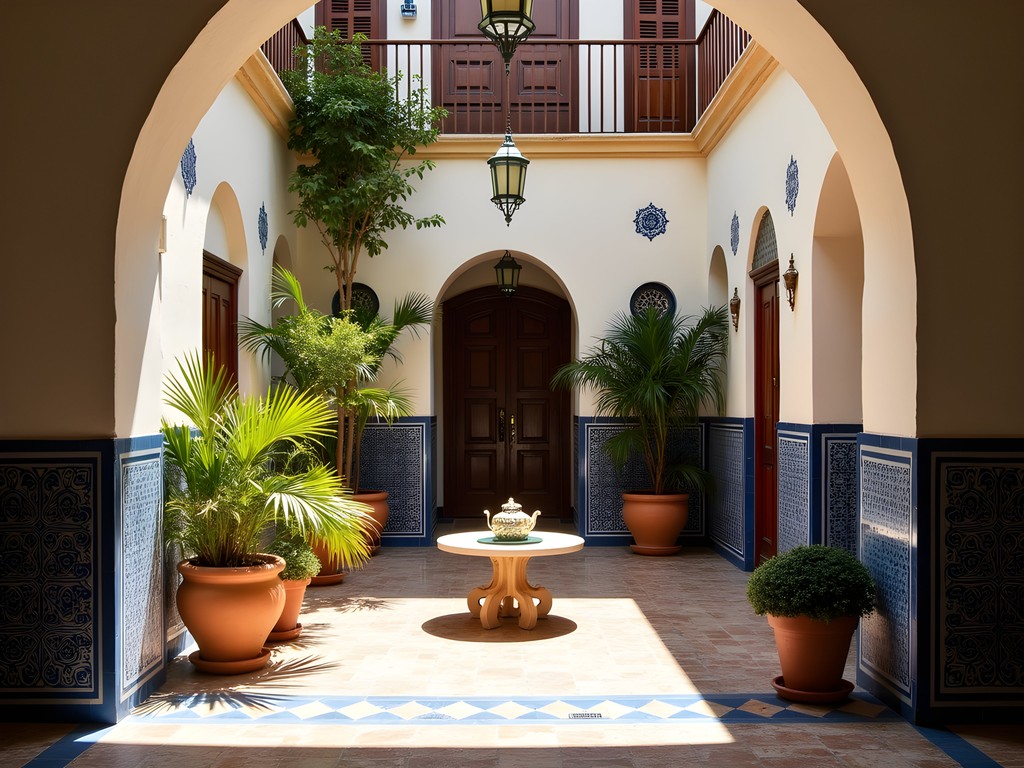
💡 Pro Tips
- Book accommodations directly through WhatsApp for better rates after finding options on booking sites
- Request rooms facing the inner courtyard rather than the street for quieter nights
- Bring small gifts from your home country for hosts—they're genuinely interested in cultural exchange
Navigating the Medina Like You Belong There
Kairouan's UNESCO-listed medina is a magnificent labyrinth that initially seems designed to confuse outsiders. By day three, I'd graduated from hopelessly lost to confidently lost—progress! By week two, I was giving directions to day-trippers.
The key to medina navigation isn't memorizing turns but understanding its organization around trades and landmarks. The perfume makers cluster together, as do the carpet weavers and metalsmiths. I started each exploration with a pocket compass (yes, old school but never needs charging) and the Great Mosque as my north star.
Unlike Marrakech or Fez, Kairouan's medina still functions primarily for locals. This means fewer tourist traps and more authentic interactions, but also requires respecting daily life. Photographing people requires permission, especially women, and dressing modestly is non-negotiable. I found my lightweight scarf essential not just for mosque visits but for everyday respect.
The true magic happens when you visit the same places repeatedly. By my fifth morning buying bread at the same corner bakery, the owner started throwing in extra harissa-filled rolls. By week two, I was being waved into homes to admire new babies and taste home-cooked makroudh (date-filled semolina cookies).
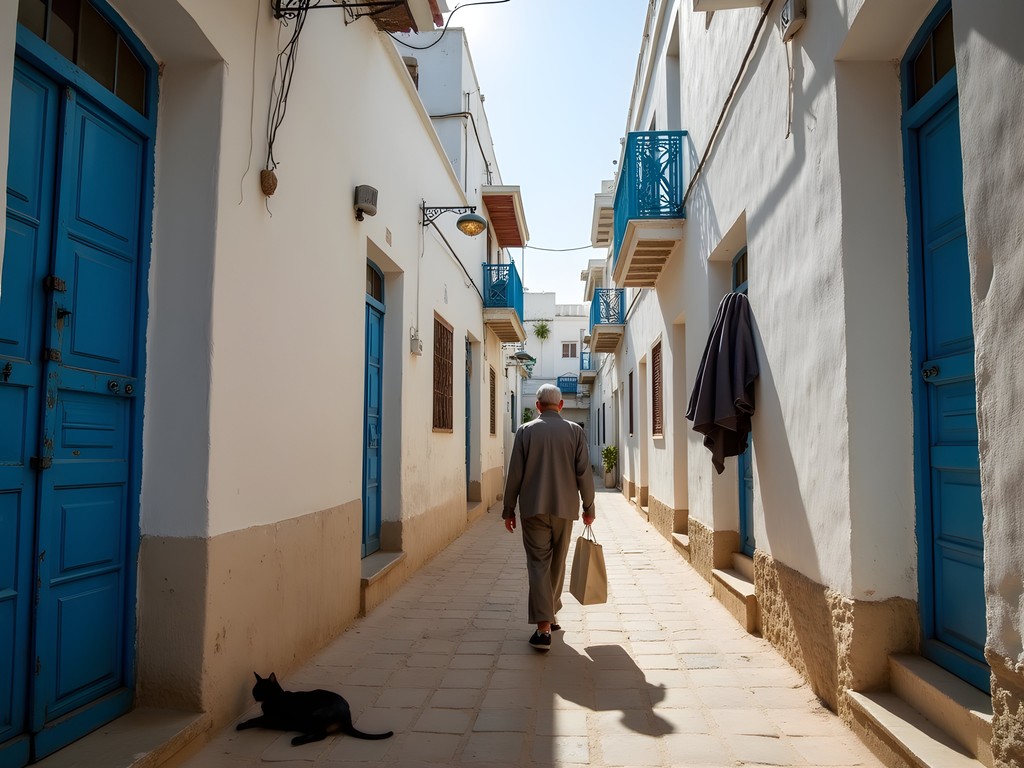
💡 Pro Tips
- Download offline maps but don't walk around staring at your phone—getting slightly lost is part of the experience
- Learn basic Arabic greetings and thank-yous; even broken attempts are deeply appreciated
- Establish a morning routine at a local café to become a familiar face quickly
Eating Like a Kairouani: Beyond Couscous
Tunisian cuisine remains criminally underrated on the world stage, and Kairouan offers some of the country's most distinctive flavors. Forget tourist restaurants—the best meals happen in humble family-run establishments where menus don't exist and prices are refreshingly low.
My daily food journey typically began at Café des Nattes near Bir Barouta for breakfast. For about $2, I'd get a spicy egg shakshuka, fresh bread, and enough coffee to fuel a morning of exploration. For lunch, I gravitated toward street food: crispy brik pastries filled with egg and tuna, or a hearty lablabi (chickpea soup) from a vendor near the Zaouia of Sidi Sahab who recognized me by day four and doubled my harissa without asking.
Dinner presented the greatest adventure. Skip the restaurants with multilingual menus and look for places filled with local families. My favorite discovery was a nameless establishment near the western medina wall where the owner, Youssef, served whatever his mother had prepared that day. One evening it might be tender lamb couscous, another night a fish tagine with preserved lemons.
I always travel with a collapsible food container for leftovers, which initially confused but then delighted my hosts when I explained the concept of reducing food waste. By week two, Youssef was sending me home with extra makloub (stuffed flatbread) for breakfast without me asking.
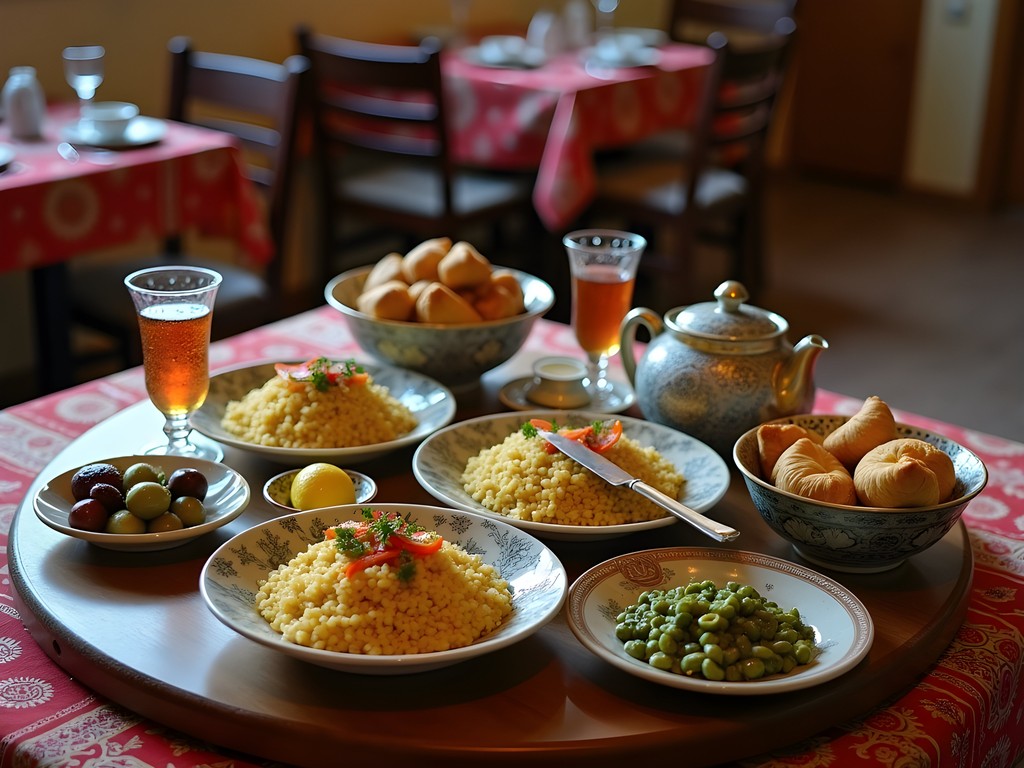
💡 Pro Tips
- Eat where families eat, not where tour groups stop
- Learn to embrace the uncertainty of no-menu establishments—I never had a bad meal
- Try the local olive oil on everything; Kairouan's surrounding region produces exceptional varieties
Beyond the Great Mosque: Hidden Sacred Spaces
While Kairouan's 9th-century Great Mosque deservedly tops every visitor's list, the city's spiritual landscape extends far beyond this magnificent monument. As a non-Muslim visitor, I could only admire the mosque's interior courtyard and prayer hall during specific hours, but this limitation led me to discover lesser-known sacred spaces where I often found myself completely alone.
The Zaouia of Sidi Abid al-Ghariani became my favorite retreat—a small 14th-century mausoleum complex with intricate stucco work and a peaceful courtyard where local women sometimes bring embroidery work in the afternoons. The caretaker, noticing my repeated visits, eventually showed me a hidden prayer room not mentioned in any guidebook, its ceiling covered in centuries-old painted wooden panels.
For those seeking spiritual connection regardless of faith, I recommend bringing a meditation cushion to the quieter zaouias. Many have peaceful corners where contemplation is welcome, and I spent several afternoons journaling in these tranquil spaces.
The Bir Barouta well—where camels still draw water using methods unchanged for centuries—connects to Mecca according to local belief. Watch for the moment when local visitors drink the water for blessings, but don't photograph this intimate ritual. Instead, sit quietly at the adjacent café and absorb the timeless atmosphere as the camel makes its circular journey.

💡 Pro Tips
- Visit sacred sites during prayer times to witness living spiritual traditions, but stay respectfully in visitor areas
- Dress conservatively with covered shoulders, knees and a headscarf for women when visiting religious sites
- Learn basic Islamic architectural terms to better appreciate the details—mihrab (prayer niche), minbar (pulpit), and sahn (courtyard)
Carpet Shopping Without the Pressure
Let's address the elephant in the room: Kairouan is famous for its carpets, and yes, every visitor faces the carpet shop invitation dance. After watching countless tourists endure high-pressure sales tactics, I discovered a more pleasant approach that resulted in not only fair prices but genuine connections.
The secret? Time and tea. Unlike day-trippers, I could afford to visit the same shops multiple times, establishing relationships before any transaction. I'd stop by Maison du Tapis near the Mosque of the Three Doors almost daily, sometimes just to practice my terrible Arabic with the owner Hassan. By my fourth visit, the sales pitch had disappeared entirely, replaced by stories about his family's weaving traditions.
When I finally decided to purchase a small Mergoum carpet in week two, Hassan skipped the inflated tourist price entirely. He also introduced me to his aunt who taught me basic weaving techniques on her traditional loom—an experience no tour group would ever access.
For examining carpet quality, I found a pocket magnifier invaluable for checking knot density and material authenticity. I also recommend bringing a luggage scale to avoid overweight baggage surprises—these carpets are heavier than they look!
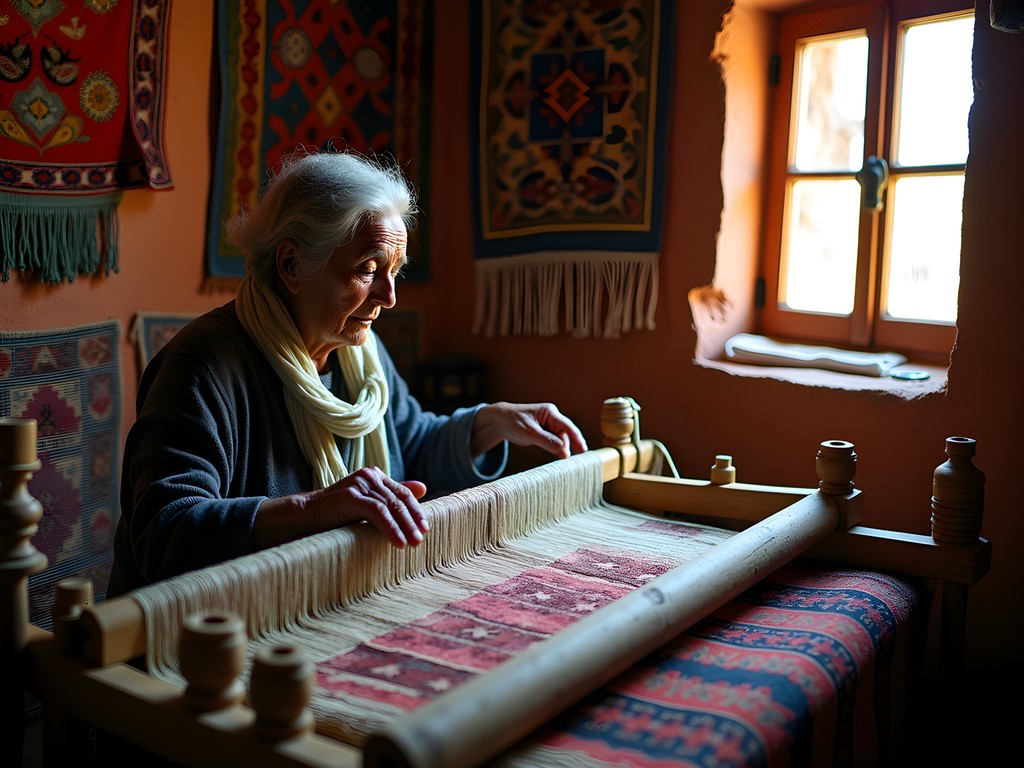
💡 Pro Tips
- Visit carpet shops during quiet hours (early morning or during prayer time) for more relaxed interactions
- Learn the difference between Kairouan's main carpet styles: Mergoum (flat weave with geometric designs) and Alloucha (high pile with Berber influences)
- Ask to see carpets being made—many shops have looms in back rooms where family members work
Final Thoughts
As my two weeks in Kairouan drew to a close, I realized I'd experienced a profound shift in how I moved through the medina. No longer following Google Maps or attracting the 'tourist gaze,' I had become—if not quite a local—at least a familiar presence woven temporarily into the city's ancient fabric. The fruit seller who saved the ripest figs for me, the carpet shop owner who invited me to his daughter's henna ceremony, the elderly man who corrected my Arabic pronunciation daily at the same corner—these connections transformed Kairouan from a historical site into a living community.
This holy city offers something increasingly rare in our hyperconnected world: an authentic experience that unfolds slowly, revealing itself only to those patient enough to linger. In an era when most sacred sites have been transformed into tourist spectacles, Kairouan maintains its spiritual dignity while still welcoming respectful visitors into its daily rhythms.
So I challenge you: skip the day trip and give Kairouan the time it deserves. Slow down. Get lost. Drink endless tiny cups of mint tea. Let the medina's maze become familiar territory. Your reward won't just be budget-friendly travel, but something far more valuable—a genuine connection to one of North Africa's most remarkable living traditions.
✨ Key Takeaways
- Staying in the medina for at least a week transforms the experience from tourist to temporary local
- Building relationships with shopkeepers and residents opens doors to authentic experiences no tour could provide
- Kairouan offers exceptional value for budget travelers willing to embrace local customs and pace
📋 Practical Information
Best Time to Visit
September to November or March to May
Budget Estimate
$30-50/day including accommodation, food and local transportation
Recommended Duration
Minimum one week, ideally two weeks
Difficulty Level
Moderate

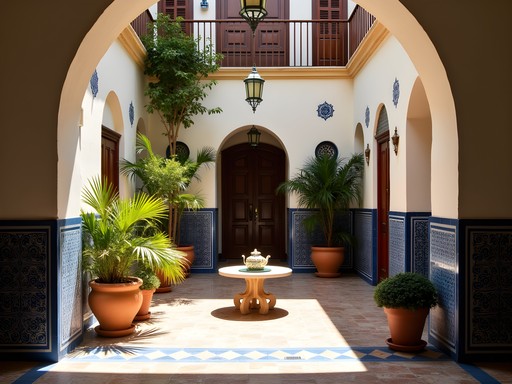
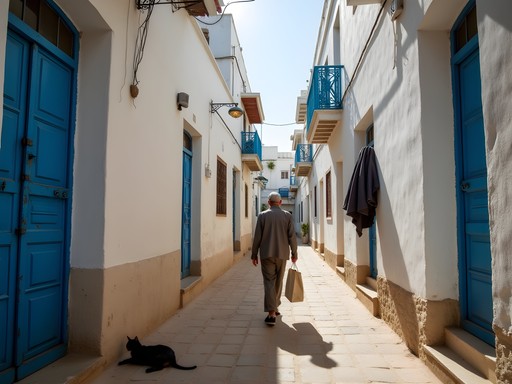
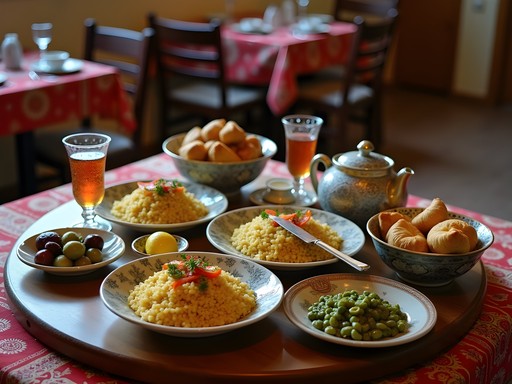
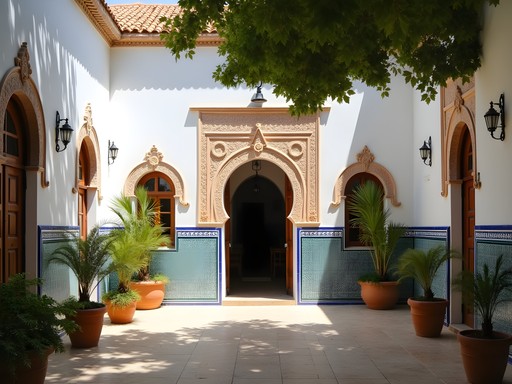
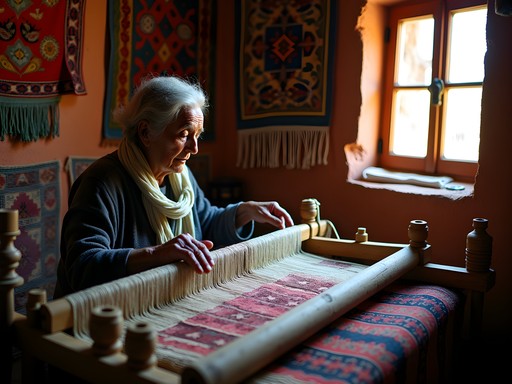


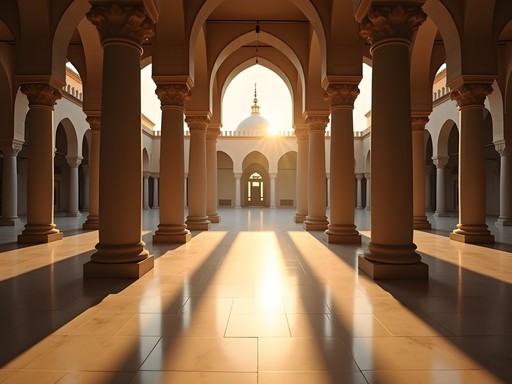






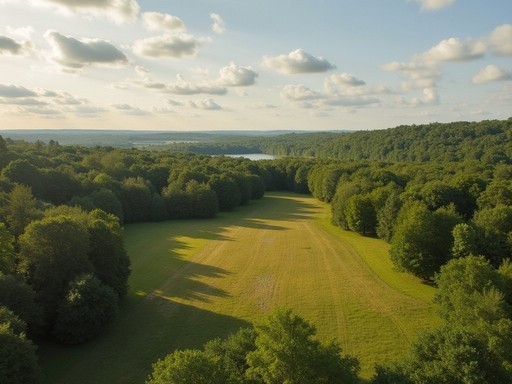
Comments
CulturalExplorer
Just got back from Kairouan last week and your guide was spot on! The tip about visiting the Great Mosque early morning was golden - got to experience it without crowds. Also discovered that little spice shop you mentioned near Place des Martyrs. The owner gave us a mini-lesson on saffron varieties and even invited us for tea. One thing I'd add - the small museum of Islamic art near Bir Barouta had an amazing calligraphy exhibition that wasn't mentioned in any guidebooks. Definitely worth the 5 dinar entry fee!
Reese Cruz
So glad you enjoyed it! That calligraphy exhibition must be new - wasn't there during my visit. Adding it to my list for next time! Did you try the lamb couscous at that tiny restaurant I mentioned?
CulturalExplorer
Yes! That couscous was life-changing! The owner even showed us how they prepare it by hand. We ended up eating there twice!
cityking
Just got back from Tunisia and spent 3 days in Kairouan after reading this post! Can confirm everything Reese wrote is accurate - especially about getting off Google Maps. Best decision ever. We found this amazing rooftop café that wasn't on any app, just by following where locals were going. The owner's son spoke English and gave us a mini-tour of their section of the medina. Also that tip about greeting shopkeepers even if you don't buy anything? Total game-changer for how people treated us. Thanks for the authentic advice!
nomadmate
Those hidden sacred spaces sound amazing! Did you need a guide?
Reese Cruz
For some yes, others no. The smaller zawiyas often need someone local to introduce you, but they're incredibly welcoming once you're there!
Marco Flores
Your post transported me back to my own adventure in Kairouan last summer! I still remember getting completely lost in those winding alleys and ending up being invited to tea by an elderly carpet weaver. No sales pitch, just genuine hospitality. The 'Beyond Couscous' section made me hungry all over again - that ojja with merguez at the tiny place near Bir Barouta was life-changing! One tip for anyone going: I found carrying a small notebook helped immensely. Locals would draw maps, write addresses, or jot down phrases for me. It became a treasured souvenir filled with the kindness of Kairouanis. I used my pocket phrasebook constantly - worth its weight in gold when venturing beyond tourist areas.
backpack_wanderer
Those hidden cafes sound amazing! Saving this for my trip next year!
citybuddy3993
Going to Tunisia next month! How difficult was it to find accommodation inside the medina? And did you feel safe as a solo traveler?
Reese Cruz
I found several great options on Booking.com, but the real gems were small guesthouses not listed online. Ask for 'dar' or 'maison d'hôte' recommendations at cafés. And yes, felt completely safe - just dress modestly out of respect!
citybuddy3993
Thanks so much! That's really helpful!
Sarah Powell
Reese, your insights on Kairouan are spot on! I visited last year and found the same tension between tourist expectations and authentic experiences. The section about navigating the medina without Google Maps resonated deeply - I actually marked my route with small sketches rather than photos (less conspicuous). One thing I'd add: the carpet workshops behind the Great Mosque offer amazing demonstrations if you show genuine interest without the pressure to buy. Did you try the local fig jam? It was a revelation with fresh bread from those tiny bakeries you mentioned.
Reese Cruz
Thanks Sarah! Yes, the fig jam was incredible - I actually brought three jars home! Love your sketching approach, much more discreet than my system of memorizing distinctive doorways.
explorezone
Wow! Never even heard of Kairouan before but now I'm adding it to my bucket list! Those medina pics are incredible!
SoloFemTraveler
Great post! As a female solo traveler, any specific advice for exploring Kairouan? Dress code tips? And I'm dying to try that makroudh you mentioned!
Reese Cruz
For dress code, I stuck with loose pants/long skirts and tops that covered my shoulders. Nothing too form-fitting. A light scarf is handy for the Great Mosque and other religious sites. And yes - you MUST try makroudh! The best is at a tiny bakery called Patisserie Masmoudi near the medina entrance. Go early before they sell out!
Gregory Boyd
Excellent piece on Kairouan, Reese. I visited back in 2019 and found the city's spiritual atmosphere quite compelling, though I only stayed for three days. Your approach of embedding yourself for two weeks shows in the depth of your observations. The section on 'Hidden Sacred Spaces' particularly resonated - the zaouias are indeed architectural treasures that most tourists miss. I'd add that the Mosque of the Three Doors (Mosquée des Trois Portes) is worth seeking out for its distinctive façade. Did you manage to visit any of the carpet workshops? The traditional weaving techniques there have remained unchanged for centuries, and I found the artisans extraordinarily welcoming to visitors interested in their craft.
Reese Cruz
Thanks Gregory! I did visit several carpet workshops - absolutely fascinating. There's a small family-run place near Bir Barouta where three generations work together. The grandmother showed me how they still use natural dyes from local plants. Definitely one of the highlights!
traveljunkie55
Love the insights from both of you! I've been wanting to buy an authentic Tunisian carpet for ages. Any tips on negotiating prices without being disrespectful?
Gregory Boyd
In my experience, showing genuine interest in the craft first goes a long way. Ask questions about the patterns and techniques before discussing price. When negotiating, start around 60-70% of the asking price, but be prepared to pay more for quality pieces. I always carried my currency converter to keep track of conversions during negotiations. And remember - the final price should feel fair to both you and the artisan.
Venture X
Premium card with 2X miles, $300 travel credit, Priority Pass